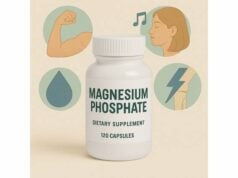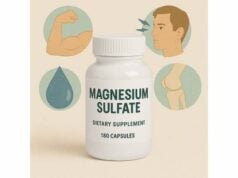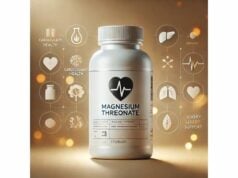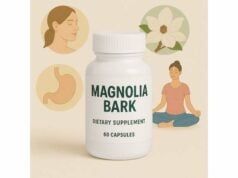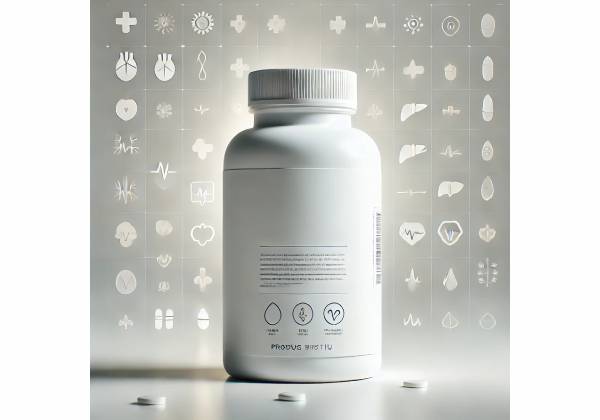
Mai Men Dong (Ophiopogon japonicus) is a classic East Asian herb valued for soothing dryness and rebuilding fluids. Traditionally, it “nourishes yin,” a shorthand for easing dry cough, parched throat, thirst, and irritability after illness or heat. Modern lab and clinical research suggests its tuber contains saponins (such as ophiopogonin D), homoisoflavonoids, and polysaccharides that help calm inflammation, support mucous membranes, and modulate the gut–immune axis. In practice, Mai Men Dong is most often used alone as a tea or in time-tested formulas for stubborn dry cough and throat tickle, nighttime thirst, mouth dryness, or a raspy voice. It is considered gentle, but the herb is “cooling,” so it may aggravate people who run cold or have loose stools. This guide explains what Mai Men Dong is, how it appears to work, who it helps most, how to take it, dosing ranges for raw herb and extracts, and side effects to watch for. You will also see where the current evidence stands, so you can decide, with your clinician, if it fits your needs.
Essential Insights
- Eases dry cough and throat irritation; supports saliva and gastric fluid production.
- Early human protocols and traditional use support benefits for nonspecific chronic dry cough.
- Typical dose: 6–15 g dried tuber per day (or ~600–1,500 mg/day of a 10:1 extract).
- Possible GI upset or loose stools in people with cold digestion; avoid if you have a productive, phlegmy cough.
- People who are pregnant, breastfeeding, or on complex regimens should seek clinician guidance first.
Table of Contents
- What is Mai Men Dong?
- Does it work and for what?
- How to take it correctly
- Best dose and timing
- Side effects and who should avoid
- Evidence at a glance
What is Mai Men Dong?
Mai Men Dong is the tuber of Ophiopogon japonicus, a small lily family plant cultivated across China, Korea, and Japan. In traditional Chinese medicine (TCM) it is categorized as a moistening, cooling herb that “nourishes lung and stomach yin.” Practically, that means it helps when tissues are too dry: dry cough that scrapes the throat, hoarseness, mouth and throat dryness, thirst, and irritability or restlessness from heat or fluid depletion. It is also paired with herbs that protect the heart and lungs in classical formulas used during convalescence.
Chemically, the tuber is rich in steroidal saponins (notably ophiopogonin D), homoisoflavonoids (such as methylophiopogonanone), and long-chain polysaccharides. Each class contributes to different effects. Saponins appear to moderate inflammatory signaling and protect membranes. Polysaccharides tend to support the gut barrier, shape the microbiota, and assist immune balance. Homoisoflavonoids provide antioxidant and additional anti-inflammatory activity. Together, these compounds explain why Mai Men Dong is used to soothe irritated mucosa in the airway and esophagus and to ease a persistent, non-productive cough.
Mai Men Dong is versatile in the clinic and at home. As a single herb tea, it is brewed longer than leafy teas to pull out viscous, soothing constituents. In compound formulas, it is a headline ingredient in Mai Men Dong Tang (Bakumondo-to in Kampo), a classic prescription for “dry, tickly cough” with throat discomfort and scanty sputum. It is also a pillar of formulas used for dry mouth and thirst at night, and sometimes appears alongside ginseng and schisandra in heart–lung support prescriptions.
Quality matters. The tubers should be plump, slightly translucent when sliced, and mildly sweet. Processing that overwashes or overheats can reduce the very mucilage-like components that make Mai Men Dong so soothing. If you choose granules or capsules, prefer reputable manufacturers that standardize to specific extract ratios and test for contaminants.
Does it work and for what?
The strongest traditional and emerging scientific signal for Mai Men Dong is relief of dry, irritating cough with throat tickle and little or no phlegm—especially when cough worsens at night or with talking. This matches its classical niche: moistening the lung to reduce non-productive cough and hoarseness. In modern settings, that pattern appears after viral illnesses, exposure to dry indoor air, or in chronic throat irritation.
Pilot clinical protocols in humans have evaluated a Mai Men Dong–centered formula (Maekmundong-tang/Bakumondo-to) for nonspecific chronic cough. These randomized, double-blind designs were built to test feasibility and preliminary effects on cough severity and quality-of-life outcomes, reflecting how the formula is used in practice. While results from small studies and protocol-driven trials primarily inform safety and study logistics, they align with centuries of consistent use and encourage larger trials.
Beyond cough, Mai Men Dong’s compounds suggest broader applications. Ophiopogonin D has shown membrane-protective and anti-inflammatory activities in preclinical models relevant to cardiovascular, pulmonary, and metabolic stress. Ophiopogon polysaccharides (OJPS) have demonstrated immunomodulatory and gut microbiota–shaping properties in cell and animal research, which may indirectly support upper airway comfort and gastric mucosal health. Early studies also highlight antioxidant effects and potential support for barrier function in the esophagus and stomach, consistent with “nourishing stomach yin” in TCM terms.
Still, it is crucial to separate promise from proof. The clinical evidence base is growing but remains limited, especially for single-herb Mai Men Dong outside classical formulas. Most mechanistic insights come from lab and animal work. For people whose main complaint is a dry, tickly cough with throat dryness—and who do not have copious phlegm or signs of cold—Mai Men Dong is a reasonable, traditional first-line option to try with professional guidance. Those with complex cardiopulmonary disease should not rely on herbs alone and must coordinate care with their clinicians.
How to take it correctly
Choosing a form depends on preference and the specifics of your symptoms:
- Whole herb decoction (classic use). Simmer sliced dried tuber gently for 20–30 minutes to produce a slightly viscous, mildly sweet broth. This form best delivers the soothing polysaccharides that coat throat and esophagus.
- Granules or capsules (standardized extracts). These offer convenience and consistent dosing, often specified as a ratio (e.g., 5:1 or 10:1). Look for third-party testing and clear labeling of crude-herb equivalence.
- Traditional formulas for dry cough. Mai Men Dong Tang (Bakumondo-to) combines Mai Men Dong with pinellia, rice, jujube, ginseng, and licorice. Formulas are chosen by pattern: dry cough with throat tickle, scant sputum, and thirst favors this prescription. In Japan, standardized Kampo products of this formula are used under medical supervision.
General how-to guidance:
- Match the pattern. Mai Men Dong is best when dryness is the main feature. If your cough is productive, thick, and worse in the morning, a warming, phlegm-transforming approach is more appropriate.
- Start low, adjust weekly. Begin near the low end of the range (see “Best dose and timing”), assess throat moisture, cough frequency, and nighttime symptoms after 7–10 days, then adjust.
- Brew it right. If using raw herb, rinse briefly, then simmer covered in ample water. Longer, gentle simmering helps release mucilage-like polysaccharides that do the soothing.
- Pair with simple care. Humidify your space, sip warm fluids, avoid throat irritants, and consider lozenges between doses.
- Know when to escalate. If cough lasts beyond 3–4 weeks, produces blood, comes with chest pain, wheeze, fever, weight loss, or severe shortness of breath, seek medical evaluation promptly.
Special notes:
- With meals or between? Many take Mai Men Dong tea between meals for throat and airway symptoms. If you tend toward loose stools, try with food and lower the dose.
- Combining with other herbs. Common companions include schisandra (for throat and voice) and ginseng (for fatigue during convalescence). Use formulas with clinician guidance if you have chronic disease or take multiple medications.
- Storage. Keep raw slices and granules airtight and dry to preserve the delicate aromatics and texture.
Best dose and timing
The right dose depends on form, body size, sensitivity, and symptom intensity.
Typical adult ranges
- Raw herb (decoction): 6–15 g dried tuber per day, split in 2–3 servings. For severe dryness or hoarseness, some practitioners use short courses up to 20–30 g/day, then taper once moisture and comfort improve.
- Standardized extract (granules/capsules): Choose a product that states its extract ratio. A practical starting range is the crude-herb equivalent of 6–15 g/day, which corresponds to about 600–1,500 mg/day for a 10:1 extract (or 1,200–3,000 mg/day for a 5:1), divided 2–3 times daily.
- Classical formula (Mai Men Dong Tang/Bakumondo-to): Standardized medical-grade products typically provide the formula in daily split doses with Mai Men Dong as the largest constituent (e.g., ~10 g crude-equivalent within the daily formula). Follow labeled or clinician-directed instructions.
Timing tips
- For nighttime cough or thirst: Take one dose 30–60 minutes before bed.
- For voice use: Sip a warm decoction 30–45 minutes before speaking, then repeat after sessions if the throat feels scraped.
- Trial length: For uncomplicated dry cough, allow 7–14 days for meaningful change; reassess at 3–4 weeks.
Adjustments
- If you run cold or have loose stools: Use the low end of the range, take with food, or combine (professionally) with gentle warming herbs.
- If you are petite or sensitive: Start at half-dose and titrate slowly.
- If using with a Kampo/TCM practitioner: Dosing is individualized; follow their plan, especially when formulas contain licorice or ginseng.
Hydration remains essential. Mai Men Dong can help your body hold moisture, but you still need regular warm fluids—especially in heated or air-conditioned environments.
Side effects and who should avoid
Mai Men Dong is generally well-tolerated when matched to the right pattern and taken at customary doses. Most people experience no side effects. When issues do occur, they tend to be mild and gastrointestinal.
Common, usually mild
- Bloating, loose stools, or abdominal coolness, particularly in people with “cold digestion” or those starting at high doses.
- Temporary reduction in appetite if taken on an empty stomach in sensitive users.
Less common
- Throat mucus increase or a feeling of heaviness if the cough is actually phlegmy—not truly dry. In that case, the herb is mismatched and should be stopped or the plan adjusted.
- Skin itching or rash is rare; discontinue and consult a clinician if suspected.
Formula-specific cautions
- If you use Mai Men Dong Tang/Bakumondo-to, note that the classic formula includes licorice (Glycyrrhiza). Licorice can raise blood pressure, lower potassium, and interact with certain drugs in susceptible people. Follow medical advice and labeled directions for standardized products.
Who should avoid or seek guidance first
- Productive (phlegmy) cough or signs of lung cold: Mai Men Dong alone is not a fit; seek an evaluation for a phlegm-transforming approach.
- Chronic diarrhea, very cold extremities, or marked fatigue with cold intolerance: The herb may worsen loose stools; professional guidance is recommended.
- Pregnancy or breastfeeding: Human data are limited; discuss with your obstetric clinician.
- Significant heart, kidney, or liver disease, or complex polypharmacy: Coordinate with your healthcare team to prevent interactions and ensure appropriate monitoring.
- Children: Use pediatric dosing and professional supervision.
Stop and seek medical care if cough persists beyond a few weeks, blood appears in sputum, or you develop fever, chest pain, wheeze, or shortness of breath. Those red flags warrant conventional assessment regardless of herbal use.
Evidence at a glance
Clinical signals
- Dry, nonspecific chronic cough: Modern randomized, double-blind study protocols and pilot clinical work have focused on a Mai Men Dong–centered formula (Maekmundong-tang/Bakumondo-to) for nonspecific chronic cough. These human studies primarily assess feasibility, safety, and symptom scales, reflecting how the formula is traditionally prescribed. Results and protocol details support larger confirmatory trials and provide dosing frameworks clinicians already use in practice.
Mechanisms and pharmacology
- Ophiopogonin D (saponin): Preclinical studies report anti-inflammatory, membrane-protective, and cytoprotective effects across cardiovascular and respiratory models. While not direct clinical proof, these data explain why the herb soothes irritated mucosa and supports recovery after heat or exertion.
- Polysaccharides (OJPS): Reviews summarize antioxidant, immunomodulatory, and gut microbiota–modulating actions, including barrier support in the GI tract and systemic anti-inflammatory effects. Those mechanisms map closely to the traditional “yin-nourishing” profile: improved moisture, calmer irritation, and steadier recovery.
- Homoisoflavonoids and other constituents: Additional antioxidant and anti-inflammatory properties deepen the protective profile.
Quality, standardization, and safety
- Standardized Kampo products of Mai Men Dong–based formulas (e.g., Bakumondo-to) are used under medical supervision in Japan, where labeling specifies composition, daily granule doses, and safety considerations. These products help translate classical prescriptions into consistent, regulated dosing for clinical settings.
- Safety overview: Reviews of Ophiopogon polysaccharides report a favorable safety profile in preclinical systems, along with encouragement for targeted clinical research. As with most herbs, matching to the right symptom pattern and dose is the main determinant of tolerability.
Practical bottom line
- For adults with dry, non-productive cough and throat dryness, Mai Men Dong or a Mai Men Dong–centered formula is a reasonable 2–4 week trial, paired with environmental humidification and voice hygiene. Expect gradual improvement in throat comfort, nighttime cough, and thirst. If symptoms are mismatched (thick sputum, chest congestion), choose a different strategy.
References
- Herbal Medicine Maekmundong-Tang on Patients with Nonspecific Chronic Cough: Study Protocol for a Double-Blind, Randomized Controlled Clinical Trial 2023 (RCT Protocol)
- Ophiopogonin D: review of pharmacological activity 2024 (Review)
- Advances in the study of Ophiopogon japonicus polysaccharides: structural characterization, bioactivity and gut microbiota modulation regulation 2025 (Systematic Review)
- Extraction, purification, structural characterization, biological activity and safety evaluation of Ophiopogon japonicus polysaccharides 2024 (Review)
- Information sheet for customer Tsumura-Kampo Bakumondoto Extract Granules 2023 (Guideline)
Disclaimer
This information is educational and is not a substitute for personalized medical advice, diagnosis, or treatment. Herbal products can interact with medications and may not be appropriate for all conditions. Always consult a qualified healthcare professional—especially if you are pregnant or breastfeeding, have chronic medical conditions, or take prescription drugs—before starting, stopping, or combining supplements. If you experience worsening symptoms, new chest pain, wheeze, fever, blood in sputum, or shortness of breath, seek medical care promptly.
If you found this useful, consider sharing it on Facebook, X (formerly Twitter), or your favorite platform, and follow us for more evidence-based guides. Your support helps us continue creating high-quality health content.


